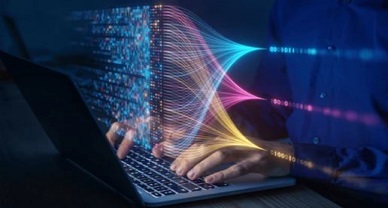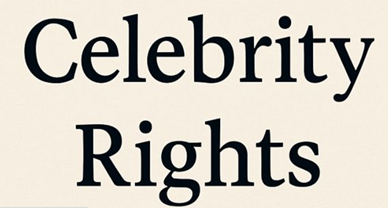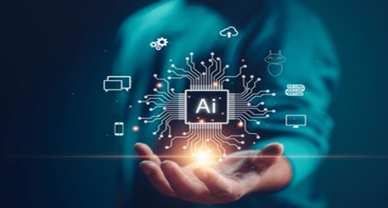Artifical Intelligence Vis-À-Vis Ownership and Authorship Right under Copyright Law
Introduction
Art has perpetually functioned as a conduit for the transmission of concepts, sentiments, and personal encounters that surpass linguistic and cultural barriers. Ethical considerations regarding the creation of artistic works have been a persistent source of dispute over the course of human history. The integration of technology within the domain of art design has provided artists with unprecedented possibilities to conceptualise and implement interactive and immersive experiences. However, there are significant concerns surrounding the acquisition, examination, application, and specifically the exhibition and conservation of Artificial Intelligence art installations. In addition, concerns have been raised regarding the authenticity and possession of the artwork, the involvement of the artist, and the authorship and ownership of its copyright in relation to the integration of artificial intelligence into the artistic process. This blog explores the ownership and authorship dilemma that arises at the intersection of AI-generated art and Thaler v. Perlmutter, 2023 [hereinafter, Thaler] with particular emphasis on the recent US court ruling in that case. The position will subsequently be examined in light of Indian law on the blog.
Authorship: An essential criterion for copyright
In the Thaler case federal district court, on August 21, 2023, affirmed the position of the U.S. Copyright Office concerning the ineligibility of artwork generated by artificial intelligence for copyright protection under U.S. law.
A landmark decision has been rendered by a court in the United States, which affirms that artworks generated by artificial intelligence lack the requisite attributes to warrant copyright protection. The court’s ruling underscores the judiciary’s acknowledgement that copyright protection is contingent upon human ingenuity; therefore, AI systems are not eligible to be considered copyright holders. The preceding decision, which concerns a pivotal moment in the intersection of technology and law, establishes a legal standard that forbids the application of the customary legal safeguards bestowed upon human-created intellectual property in the case of AI-generated artwork.
It stated that for an artwork to be considered for copyright protection, it must meet the doctrine of ‘modicum of creativity’ i.e. minimal degree of creativity required for independently created artworks.
This view of the court highlights the necessity of some degree of creative involvement in artworks for them to be acknowledged. This landmark judgement, which concerns a turning point in the development of law and technology, establishes a precedent that forbids giving AI-generated art the same legal protections as intellectual property created by humans.
Furthermore, the judgment provided an insight on how the legal arena is evolving to inculcate newer technological developments. By emphasizing the significance of human creative work in determining copyright ownership, the reasoning of the court offers a concise exposition of the core ideas of copyright law. It has, therefore, started a comprehensive discussion about whether the intellectual property laws that exist today are sufficient enough to deal with the complications brought about by growth of various industries. It has also highlighted the need for judicial growth to keep up with the times.
AI vis-à-vis Indian Copyright Law
For a work to be accorded copyright protection, there are two fundamental criteria to be met. Firstly, the work shall be given credit for being produced by a human. Secondly, the work must be original in nature and must have display originality in its production. If cases where these conditions are not met, the work can be denied copyright protection. The Indian Copyright office has been granted with the authority to refuse registration if they are of the view that the work lacks significant creative contribution and human authorship necessary to support a legitimate copyright claim. Thus, demonstrates that there are two elements to the challenge of copyright protection for information produced by artificial intelligence.
When it pertains to delegating ownership and authorship to an AI, there are two dimensions that are taken into account. The first dilemma revolves around the question whether an AI can be recognized as an author, and second conundrum is whether the work generated by AI contain considerable number of creative elements to meet the standards for being considered a human labour product.
With reference to the first prerequisite, it is of notable significance that the Indian courts have not take a firm legal stance on the dispute of ownership regarding to content produced by artificial intelligence. As a consequence, the courts have yet not examined this legal complex issue. However, one incident has gained a lot of attention and is being seen as the silver lining by the individuals who wish to register AI produced work as their intellectual property. Ankit Sahani, the creator of the AI- based painting application Raghav, submitted two petitions for copyright protection for the AI- generated piece of art called “Suryast”. The first petition was filed under Raghav’s name, but the copyright registrar quickly denied it. The petition was registered under the name of Ankit Sahani with Raghav mentioned as the co- author. The Copyright Office submitted concerns after the second Suryast application was registered, which prompted them to pursue the termination of the registration. The Copyright Office’s concerns and the Office’s response to them are kept confidential because of the parallel nature of the proceedings in the United States. It is likely that the concerns stemmed from the fact that Indian copyright law expressly acknowledges that only individuals are permitted to create works.
Obstacles in granting AI Ownership of copyright
Advancement in technology at a rapid pace has helped artificial intelligence develop to the point where it can generate creative works independent of any human intervention. This trend raises concerns about authorship and copyright ownership attribution for these kinds of works. Two major obstacles can be recognized in this context. Firstly, the first obstacle being in context of the artwork produced with human guidance where the contribution of human creativity becomes immensely significant. Hence, generating copyright ownership opportunities for human contributors. Secondly, the complication surrounding authorship originates when artificial intelligence generates works on its own without any human interaction. Assigning authorship to artificial intelligence necessitates a thorough analysis of its philosophical and legal underpinnings.
With reference to AI produced work, rewarding authorship to AI is a complicated matter with significant consequences. If an AI is given authorship rights to a work, it produces and a case of copyright infringement occurs on the produced work, the AI is left without legal recourse for any potential infringement it may have caused. Furthermore, it cannot be held liable for any potential infringement that it may have caused. This is because AI is susceptible to legal action as it is not considered a legal person. Thus, it is imperative to established the vacuum which prevail pertaining to legal status of AI before delving into the issue of giving it authorship rights.
Moreover, in accordance with Indian legislation, the safeguarding period for artistic creations is established at sixty years from the year following the author’s demise. The basic rationale for the length of protection under copyright law is rendered redundant if AI is granted authorship of such a work, as AI is perpetual.
Conclusion and Suggestions
The combination of AI- generated artistic productions and copyright violation in India raises significant difficulties from the legal arena. With the development of AI, it is imperative to create a balance between safeguarding the rights of copyright holders and developing the AI innovation.
Whilst AI is not legally recognized, its contributions may be acknowledged under different standards from that of traditional copyright laws. However, it can only be acknowledged on the basis of integrity practiced which would further minimise the discrepancies that exist in the current legal regime. Effective monitoring and proper regulations on the working of artificial intelligence would ensure appropriate usage of copyrighted information.
The laws set in place for intellectual property need constant upgradation for them to be able to keep up with the development of AI. This means acknowledging and addressing the unique challenges that arise from creation of content by artificial intelligence, copyright ownership, and fair usage in the context of digital age.
Additionally, it must be made essential for AI companies to appoint officers specifically for the purpose of overlooking and maintaining copyright protection and conducting assessments. These officers would be responsible to ensure that content produced by the artificial intelligence is in adherence with the copyright laws.
Author:- Mitali Sharma, in case of any queries please contact/write back to us at support@ipandlegalfilings.com or IP & Legal Filing.



